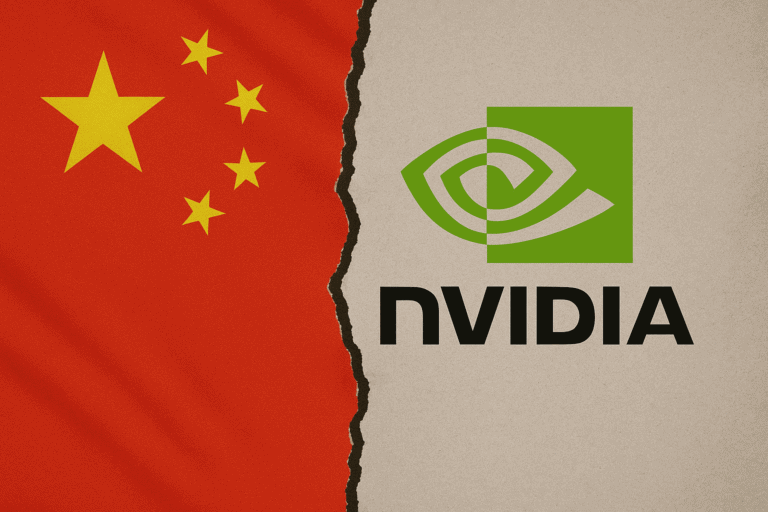Vendor lock-in is a ubiquitous problem. Anyone looking for AI chips will find it difficult to bypass Nvidia. Yet every Big Tech player is trying to do just that. China, increasingly cut off from Nvidia’s hardware due to export restrictions, is relying on powerhouses Alibaba and Huawei to become AI self-sufficient. How successful are they in this endeavor?
Nvidia is virtually unbeatable as a supplier of AI chips. Its Graphical Processing Units (GPUs) are by far the most powerful, scalable, and easy to use, especially for training large language models. This has propelled Nvidia to a market value of over $4 trillion. Although AMD in particular touts a cheaper yet mostly similar equivalent, Nvidia’s ecosystem of software layers and partners forms an impregnable fortress. That is why would-be rivals are focusing on inferencing, or the daily running of AI models. Such a workload is much less demanding on IT hardware than training and less dependent on a deep knowledge of the Nvidia software stack. Groq and Cerebras are emerging AI players as alternatives to the AI superpower in this field, but there are also many startups offering cheap and/or efficient chips for inferencing. In China, home-built tech giants Alibaba and Huawei are the ones challenging Nvidia’s dominance – where it can.
Breakthrough
Usually, rivals doing their damnedest will not matter much to Nvidia. As long as it is permitted to do so, the company will continue to build China-bound GPUs that comply with US export restrictions to the country. There is a sizeable market for the H20, the weaker sibling of the H100 chip that is available for sale in the West. However, the real state of the art remains outside China: all Blackwell chips, the latest generation of Nvidia GPUs well beyond the Hopper series (H20/H100), are not destined for Beijing. Until July, even H20s were banned from AI exports temporarily; President Trump later changed his mind, and now China is allowed to tap into Nvidia’s resources again.
The striking thing? The Chinese government is now telling its domestic companies to stop placing orders with Nvidia. Instead, they must rely on chips from Alibaba, Huawei, and a few smaller players such as MetaX and Cambricon. The real sensation at the moment is the former. According to the Wall Street Journal, Alibaba has succeeded in making its AI chips compatible with Nvidia’s software. That’s a major breakthrough and cannot be understated. It means that software developers experience less friction than if they had to understand a whole new set of AI tools.
Earlier this year, DeepSeek proved that deep knowledge is needed to build AI models with a big impact. One of the strengths of DeepSeek-R1, the open-source model that surprised friends and foes alike when it was released, is that it was trained with extremely high efficiency. This was made possible by diving deeper into the Nvidia hardware and programming on PTX, the layer below CUDA. Such optimizations will only become more important now that Chinese AI companies have to rely on less powerful hardware. This will cause major problems for training. That seems to have already been the case. DeepSeek-R2 is said to have been delayed because DeepSeek tried to use Chinese chips for AI training.
Waiting time
In the chip industry, it is extremely common to think in terms of multiple years or even a decade or more. The AI world has not been accustomed to this since ChatGPT. Nvidia itself has already discovered this imbalance, resulting in a rather unimaginable achievement: a completely new chip generation every year. Normally, 18 months is a fast refresh rate, with 24 or even 36 months being the traditional wavelengths between meaningful generational improvements. In between, there may be a mid-cycle refresh, with the same chip architecture seeing the light of day in an optimized form.
This is relevant because, in order to keep up, China will have to beat this pace or hope that Nvidia slows down. The latter is quite possible long-term: look at the examples of Intel and, earlier, AMD, and see how chip players remain stuck at a certain performance level for a long time. Intel was unable to achieve any meaningful CPU progress for years after the Sandy Bridge architecture in 2011. AMD experienced a near-complete decline before returning in 2017 with the Ryzen CPU architecture. The difference between these examples and Nvidia is that, on the one hand, there is competition (which was not the case for Intel) and no existential crisis (which was the case for AMD). In other words, there are few factors that could throw Nvidia off balance. The competition is at a safe distance but is making progress, forcing Nvidia to continue developing; the company has billions upon billions in fresh capital every quarter, allowing it to afford mistakes.
Chinese chip players will have to do more than keep up with Nvidia’s pace. They are also cut off from ASML’s advanced High-NA EUV chip machines, which are already being warmed up for future chip generations from TSMC’s and Intel’s factories. Advancing on the basis of ASML equipment is the “easiest” way to build more efficient and faster processors. This could well set the ceiling for China’s ambitions. Without luring employees, IP theft, or other unforeseen breakthroughs, Chinese chip machine builders will not come close to ASML in the coming years. This means that we should take the dizzyingly rapid improvement of AI chips from China with a grain of salt.
Read also: ASML: from a leaky shed to the chip industry’s key player
